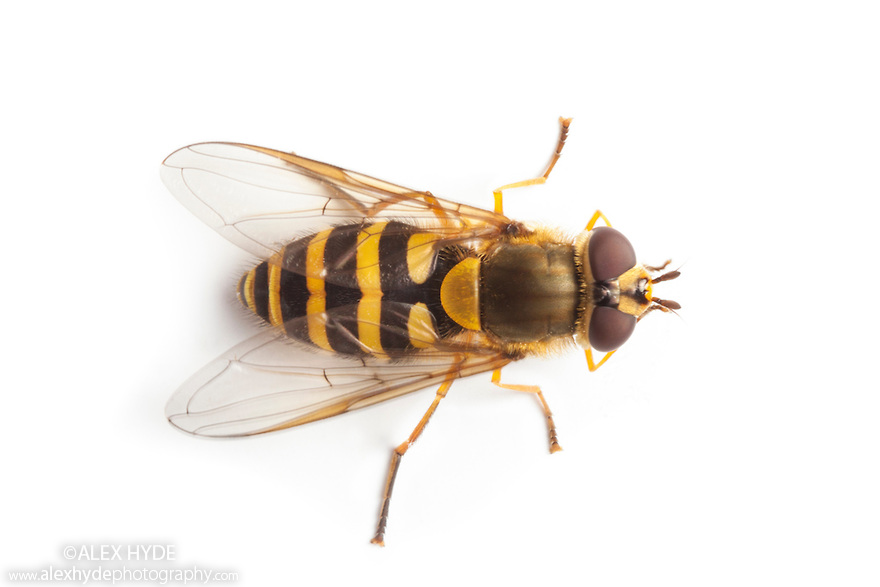

This enables them to avoid attack by predators who believe they might be able to sting. Many hoverflies mimic the colouration and/or hairiness of social bees and wasps. Eggs of non-carnivorous species are usually laid in batches on or near the larval food. Eggs that hatch into carnivorous larvae are usually glued singly to plants amongst or near their prey. There are also aquatic larva, like the rat-tailed maggot below, they tend to pupate near the water. When the larva pupates the pupa is brown and stuck to the plant or some other surface, see the photograph below. A larva like this can eat 50 aphids a day. It has stuck the skins of sucked-dry aphids to its body - they are the little white things on the centre of its body. Note that many of the veins do not reach the edge of the wing.Ībove is an aphid-eating hoverfly larva. Note the the aristate antennae (see photographs below) and huge eyes typical of the more "advanced" flies.īelow is the wing of a typical hoverfly. The adults are often brightly coloured attractive flies.
Hover flies manual#
Manual of Nearctic Diptera, 2.There are 6,000 species of hoverfly world wide, and 276 species in the U. The flower flies of the subfamily Syrphinae of Canada, Alaska, and Greenland: Diptera, Syrphidae (Vol. The identity of some holarctic and Old World species of Sphaerophoria (Diptera: Syrphidae). The Memoirs of the Entomological Society of Canada, 101(S62), 5-176. A revision of the genera of the Syrphini (Diptera: Syrphidae). The Linnaean species of flower flies (Diptera: Syrphidae). International Journal of Insect Morphology and Embryology, 27(2), 135-142. Functional morphology of the mandibles of the larvae of Episyrphus balteatus (De Geer, 1776)(Diptera: Syrphidae). Ottawa, Research Branch, Agriculture Canada, Monograph, 27.

Pollinating flies (Diptera): a major contribution to plant diversity and agricultural production. A checklist of hoverflies (Diptera: Syrphidae) in the western Himalaya, India. NEW DISTRIBUTIONAL RECORDS AND ANNOTATED KEYS OF HOVER FLIES (INSECTA: DIPTERA: SYRPHIDAE) FROM HIMACHAL PRADESH, INDIA. Sengupta, J., Naskar, A., Maity, A., Hazra, S., & Banerjee, D. An updated distributional account of Indian hover flies (Insecta: Diptera: Syrphidae). Sengupta, J., Naskar, A., Maity, A., Hazra, S., Mukhopadhyay, E., Banerjee, D., & Ghosh, S. Plant-pollinator biodiversity and pollination services in a complex Mediterranean landscape. G., Petanidou, T., Roberts, S., O’Toole, C., Hulbert, A., & Willmer, P. A review of the hover flies (Syrphidae: Diptera) from India. Mitra, B., Roy, S., Imam, I., & Ghosh, M. Canadian Journal of Arthropod Identification, 23(1), 351. Ecology and biogeography of high altitude insects (Vol. First edition, Forrest Text Publisher, Iver (United Kingdom), 2011, 334. Graham E.Rotheray and Francis Gilbert: The Natural History of HOVERFLIES. An annotated checklist and select bibliography of the Hoverflies (Diptera–Syrphidae) of Pakistan, Indian subcontinent. Some nomenclatural notes on Indian subregion Syrphini (Diptera: Syrphidae). Munis entomology and zoology, 3(1), 275-284. Hover flies (Diptera: Syrphidae) from rice fields and around grasslands of northern Iran. Ghahari, H., Hayat, R., Tabari, M., & Ostovan, H.
%2002.jpg)

Flower flies from the Pin Valley National Park, Himachal Pradesh. Records of the Indian Museum, 27, 75-79.īulganin, M., Parui, P., Mukherjee, M., Sharma, R. Some notes on Indian Syrphidae, Conopidae and Oestridae. Records of the Indian Museum, 9(5), 255-277.īrunetti, E. New and interesting Diptera from the eastern Himalayas. Records of the Indian Museum, 2, 49-96.īrunetti, E. Notes on Oriental Syrphidae with descriptions of new species. Records of the Indian Museum, 1, 11-13.īrunetti, E. Entomologia experimentalis et applicata, 42(3), 271-277.īrunetti, E. Episyrphus balteatus as a predator of the aphid Sitobion avenae on winter wheat.


 0 kommentar(er)
0 kommentar(er)
